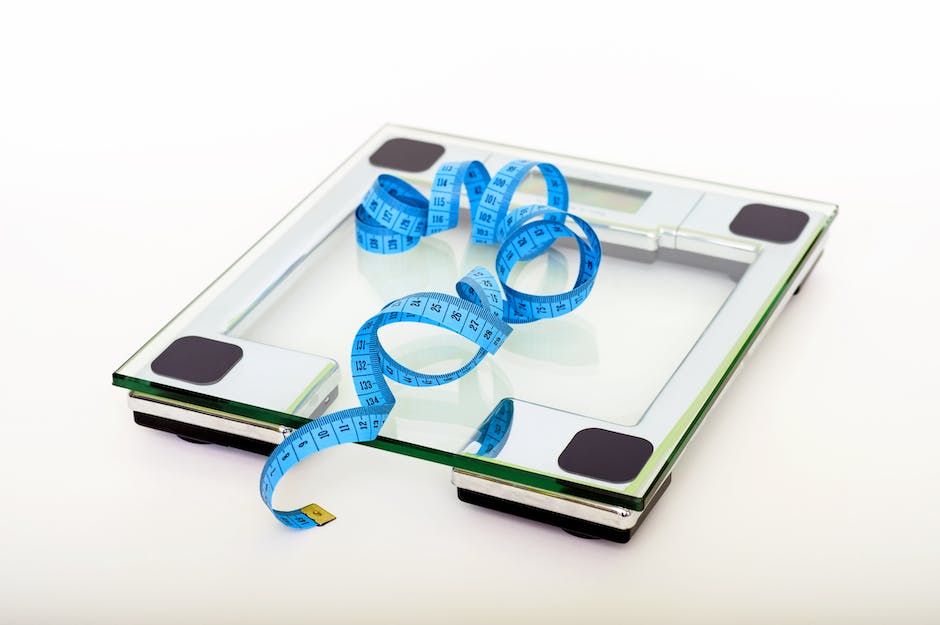Whether you’re striving for muscle growth, aiming for weight loss, or simply seeking to maintain a healthy lifestyle, proteins play an integral role. As one of the primary building blocks of the human body, proteins are involved in almost every function related to our growth and maintenance. To fully comprehend the importance of proteins and a high protein diet, it’s essential to delve into the nuts and bolts of proteins themselves, their dietary sources, their role in weight management, and their potential risks. This discussion will also provide you with practical tips for creating a balanced high protein diet that suits your specific needs and lifestyle.
Understanding Proteins
Understanding Proteins
Proteins are large complex molecules essential for the structure, function, and regulation of the body’s tissues and organs. They consist of amino acids, and organic compounds composed of nitrogen, carbon, hydrogen, and oxygen. Nine out of the twenty different varieties of amino acids are considered critical since the human body can’t synthesize them. These groups of essential amino acids are histidine, isoleucine, leucine, lysine, methionine, phenylalanine, threonine, tryptophan, and valine.
While proteins are usually associated with meat, they are also found in a wide variety of animal and plant-based foods, including dairy products, grains, legumes, nuts, and seeds. The body needs to get its supply of protein from a combination of these different sources to ensure a healthy mix of all essential amino acids.
Protein Functions in the Body
Proteins serve a broad range of functions in the human body. They play an essential role in building and repairing body tissues, making enzymes, hormones, and other body chemicals. They are the building blocks of bones, muscles, cartilage, skin, and blood.
For example, proteins such as actin and myosin contribute to muscle contraction and mobility. Keratin is a key structural component of hair, nails, and skin. Enzymes, cellular regulators, and antibodies are also composed of proteins.
Besides their structural roles, proteins also play a role in immune response, digestion, and various metabolic processes. Immunoglobulins, or antibodies, are proteins that help protect the body against foreign substances like bacteria and viruses. Enzymes, another type of protein, facilitate chemical reactions in the body, including the breakdown of food in digestion.
High Protein Diet and Its Role
A high protein diet is most well-known for its role in muscle development and weight management. Consuming protein-rich foods can help build and repair muscle tissues, especially when paired with regular exercise—a regimen often followed by athletes, bodybuilders, or individuals looking to gain muscle mass and improve their physique.
In terms of weight management, high protein diets can help promote satiety (feeling full), which can lead to a lower overall calorie intake. This way, they aid weight loss and prevent weight gain. Studies have also shown that a diet high in protein can help reduce harmful belly fat specifically, which is linked to various chronic diseases.
However, it’s crucial to note that excessive protein intake can lead to kidney problems in people with kidney diseases and may contribute to a higher intake of unhealthy fats, particularly if most of the protein comes from animal sources. It’s essential to balance protein intake with regular consumption of fruits, vegetables, and whole grains to maintain a well-rounded diet.
Engaging with a Healthcare Provider or Nutritionist
To become more informed about a high-protein diet, begin by consulting a healthcare provider or nutritionist. They can provide personalized guidance on protein consumption according to your unique characteristics, such as age, sex, level of physical activity, and overall health condition.

Protein Sources
Exploring Animal-Based Protein Sources
One of the first things to consider when adopting a high-protein diet is animal-based protein sources. These typically contain all necessary amino acids, making them a complete protein source for your body.
Consider options like chicken breast, a staple in many high-protein diets, for instance. A boneless, cooked chicken breast delivers about 54 grams of protein, with very low fat content. Additionally, it provides essential vitamins like Vitamin B6 and niacin.
Beef, especially lean cuts, is another excellent source of protein, offering up to 22 grams in just a 3-ounce serving. Aside from protein, beef also supplies iron, zinc, and vitamin B12 to your diet.
Should you prefer seafood, fish such as Tuna and Salmon, deliver about 20-25 grams of protein per 3-ounce portion. Importantly, they also contain healthy omega-3 fatty acids, which promote heart health.
Eggs, another versatile protein source, provide around 6 grams of protein per large egg, along with critical nutrients like vitamin B12 and selenium.
Lastly, don’t overlook dairy products like milk, cheese, and yogurt in a high-protein diet. They provide protein and other vital nutrients including calcium, vitamin D, and potassium.
Plant-Based Protein Sources
For those who follow vegan or vegetarian diets, there are also plenty of plant-based sources to help meet their protein requirements.
Lentils are a great plant-based protein source, offering about 18 grams per cooked cup. They are also high in fiber and a good source of iron and potassium.
Soy products, including tofu and tempeh, are among the richest sources of plant-based protein. Tofu contains about 10 grams of protein per half cup. Soy milk is also high in protein, and calcium, and fortified with other vitamins and minerals.
Quinoa is a high-protein grain, boasting about 8 grams per cooked cup. It’s also one of the few plant-based proteins that contain all nine essential amino acids.
Nuts and seeds, like almonds, pistachios, flaxseeds, and chia seeds are good sources of protein and also provide healthy fats and fiber.
Measuring Protein Quality
Protein quality is determined by its amino acid composition and digestibility. Animal proteins are considered high-quality, as they contain all essential amino acids and are easily digested. Many plant proteins, except for soy and quinoa, lack one or two essential amino acids, but combining different plant protein sources in a meal can help ensure a balance of all essential amino acids.
High Protein Diet: A Perspective for Vegans and Vegetarians
Adopting a vegan or vegetarian lifestyle doesn’t mean you have to compromise your protein intake. The key to achieving an adequate intake is incorporating a range of plant-based proteins into your daily meals. Lentils, chickpeas, peas, a variety of nuts, seeds, soy products, and whole grains offer substantial amounts of protein. Consuming these regularly ensures a balanced intake of all necessary amino acids your body requires.
It’s imperative to understand that despite the importance of protein, maintaining a balance with carbohydrates, fats, vitamins, and minerals is essential for overall health. Keep in mind, that individual protein needs can vary depending on factors such as age, sex, weight, level of activity, and overall health. Therefore, before switching to a high protein diet, it is recommended to consult with a healthcare provider or a registered dietitian.

High Protein Diet and Weight Loss
Utilizing High Protein Diets for Weight Management
Dietary approaches with a focus on high protein intake have been spotlighted for years as an effective tool for weight management. Their popularity stems from their ability to promote feelings of fullness, effectively reduce hunger, and help maintain and support lean muscle mass when calories are restricted.
One research study, published in the “American Journal of Clinical Nutrition,” demonstrated that high-protein diets might promote weight loss without the need for restricting calories, carbohydrates, or even other nutrients. Participants in the study experienced increased feelings of fullness and reduced hunger, which subsequently led to a lower overall caloric intake.
Another important finding was published in the “Journal of Nutrition,” illustrating that high protein diets can combat muscle loss and a slowing metabolism, commonly observed during periods of active weight loss. This is essential because weight loss often results in muscle loss, which can adversely impact metabolism and make long-term weight control more challenging. Luckily, increased protein intake promotes muscle preservation and improves resting caloric burn rates.
Proteins, Metabolism, and Appetite
Proteins play a significant role in increasing metabolic rate because of the higher energy cost to metabolize them compared to fats and carbohydrates. This is called the thermic effect of food, and it’s higher for protein than for other macronutrients.
The thermic effect of protein is about 20-30% compared to 5-10% for carbohydrates and 0-3% for fats. This means that you burn more calories digesting proteins than you do digesting the same amount of carbohydrates or fats.
Aside from boosting metabolism, proteins are also known to decrease appetite. Part of this effect is because protein intake increases the production of hormones like GLP-1, peptide YY, and cholecystokinin, which are responsible for creating a feeling of fullness. This can delay the return of hunger and lead to a reduced caloric intake throughout the day, further promoting weight control.
Insights From Scientific Studies
A plethora of studies continue to highlight the benefits of high-protein diets. For instance, one study feature in the esteemed “American Journal of Clinical Nutrition” revealed that those consuming up to 30% protein in their meals reported decreased late-night snacking and a significant dip in their preoccupation with food. These findings were in contrast to those consuming a lesser amount of protein.
Additionally, a study published in the “Obesity” journal brought to light the role of high-protein diets in weight loss. Participants who adhered to a protein-rich diet managed to maintain more of their lean mass and experienced a lesser drop in metabolic rate. This was in contrast to those who followed a diet with standard protein amounts.
The collective insights from these studies highlight that a high-protein diet promotes weight management. It achieves this by enhancing metabolism, curbing appetite, and aiding in the retention of lean muscle mass during weight loss.

Risks and Concerns
Understanding the Potential Risks of a High-Protein Diet
Despite the numerous health benefits associated with high-protein diets, including weight loss, muscle gain, and improved metabolic health, they are not without potential risks when over-consumed. One primary concern linked to excessive protein intake is kidney damage. This risk is particularly significant for those with pre-existing kidney ailments as the heightened protein intake could further deteriorate their kidney function. This is owed to the additional burden placed on the kidneys while eliminating waste products from protein metabolism.
An imbalance in your diet due to excessively high protein can also lead to a range of nutrient deficiencies. Pivotal nutrients like carbohydrates, fats, fiber, vitamins, and minerals may get displaced in a high-protein diet. These nutrients play a vital role in sustaining overall health. For example, focusing too heavily on protein could result in lower dietary fibre intake, potentially leading to digestive issues like constipation. It could also increase cholesterol due to a lack of heart-friendly whole grains.
Who Should Be Cautious of High-Protein Diets?
While high-protein diets can be beneficial for many, specific groups should approach them with caution due to their unique health requirements. Those with kidney diseases or an increased risk for such conditions, for instance, may face additional strain on their kidneys as a result of a high-protein diet.
Mature adults, especially those over 65, should also be wary. As one’s metabolism slows with age, the body’s ability to break down and absorb protein may decrease, potentially causing a waste buildup.
Expectant mothers need to be particularly cautious about boosting their protein intake without professional guidance, as it could adversely affect the health of the fetus. Instead, a balanced diet that includes optimum quantities of carbohydrates, fats, and protein tends to be suggested for a healthy pregnancy.
Similarly, individuals with select metabolic disorders and uncommon genetic conditions that affect protein absorption, such as phenylketonuria, should stick to low-protein diets to prevent health complications.
Given the unique dietary requirements of each individual, it is always recommended to consult with a healthcare professional before committing to a high-protein diet or any significant dietary changes, particularly for the above groups. Tailored dietary advice based on one’s health status, lifestyle, and nutritional requirements, is the best way forward.

Creating a Balanced High Protein Diet
Determining Your Protein Requirements
Before setting out on a high-protein diet, it’s essential to learn how to calculate your daily protein needs for a balanced diet. As per the Dietary Reference Intake (DRI) set out by the Institute of Medicine’s Food and Nutrition Board, an average adult requires about 0.8 grams of protein per kilogram of body weight every day. However, this number can vary depending on several factors including age, gender, level of physical activity, and overall health.
If you are actively involved in high-intensity physical activities regularly, the American Dietetic Association recommends that you increase your protein intake to between 1.2 to 1.7 grams per kilogram of body weight. Nonetheless, always remember to seek advice from a healthcare professional before substantially increasing protein intake.
High-Protein Meal Planning
When incorporating a high-protein diet into meal plans, it’s important to involve different protein sources to ensure a varied nutrient profile. These sources may be animal-based such as meats, dairy products, and eggs, or plant-based like legumes, grains, and nuts.
For breakfast, options could include Greek yogurt with almonds or omelets with ham, cheese, and vegetables. Lunch might be grilled chicken salad or tuna wrap, while dinner can be lean steak, salmon, or tofu with various veggies. Additionally, add high-protein snacks, like roasted chickpeas, cheese cubes, or protein shakes, between meals to reach the daily protein target.
Balancing Nutrients in a High Protein Diet
While consuming adequate protein is crucial, it is also essential not to neglect other macronutrients. Carbohydrates and fats are necessary for energy, fiber for digestion, and various vitamins and minerals for overall health.
This balance can be achieved by eating a wide variety of foods, including whole grains, fruits, vegetables, and healthy fats such as avocados, nuts, and seeds, along with your protein sources. The key is moderation and variety to ensure that you’re not overdoing any food group to the detriment of others.
Incorporating More protein in Daily Diet
One practical approach to increase protein intake is through small, consistent changes. Swap regular yogurt for Greek yogurt for breakfast, or add a serving of quinoa – a high protein grain – to your lunch. Consider using protein-rich chickpea flour in recipes instead of regular flour, or snack on a handful of almonds instead of chips.
Remember that while many protein-rich foods like meat and dairy products also contain fats, leaner options are available. Skinless chicken, lean cuts of meat, low-fat dairy products, tofu, and many legumes are high in protein but lower in fat. These small modifications can make a significant difference in making a high protein diet both achievable and sustainable in the long run.
Finally, ensure that the transition to a high-protein diet is gradual, allowing your body to adjust to the changes. Rapid dietary changes can sometimes lead to digestive issues, so it’s recommended to increase protein intake slowly over a period.
Guidelines for Hydration
As protein metabolism requires more water than fats or carbohydrates, keeping hydrated is essential when following a high protein diet. The Institute of Medicine recommends around 3.7 liters of total water intake for men and around 2.7 liters for women. Being adequately hydrated helps your kidneys to process the extra waste generated through protein metabolism more effectively.

While a high-protein diet can offer several benefits, including improved weight management and muscle growth, it should not be taken lightly. Drawing protein from diverse sources, both animal-based and plant-based, and understanding the potential risks are fundamental to ensuring a healthy, balanced diet. It’s equally critical to remember that diet alone isn’t the key to good health. Regular exercise, enough rest, drinking plenty of water, and reducing stress are equally vital. Be empowered to make informed dietary choices, embracing the significant role that proteins play and implementing a balanced high-protein diet within the broader context of your total well-being.
